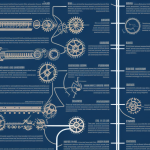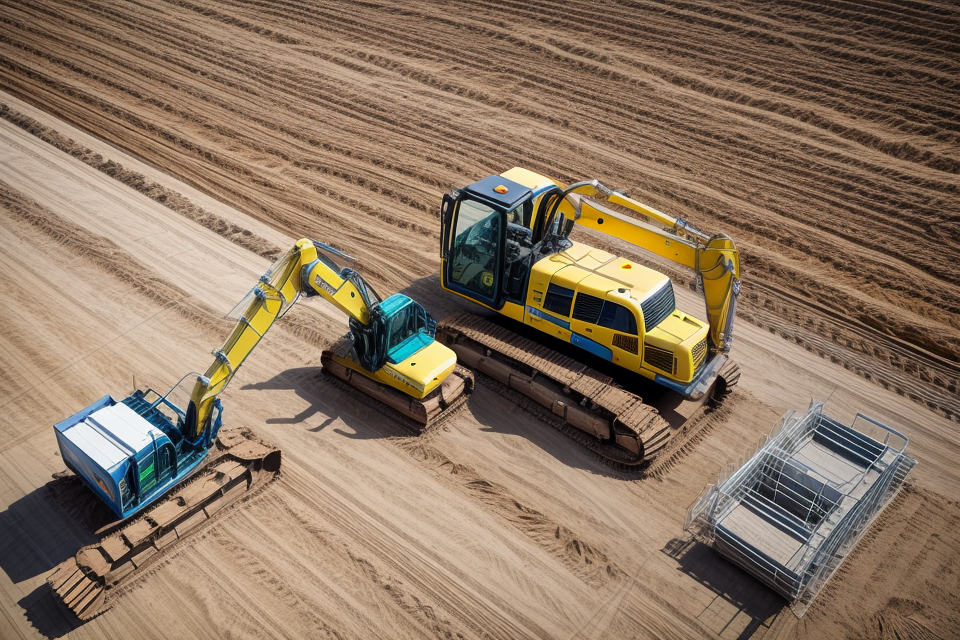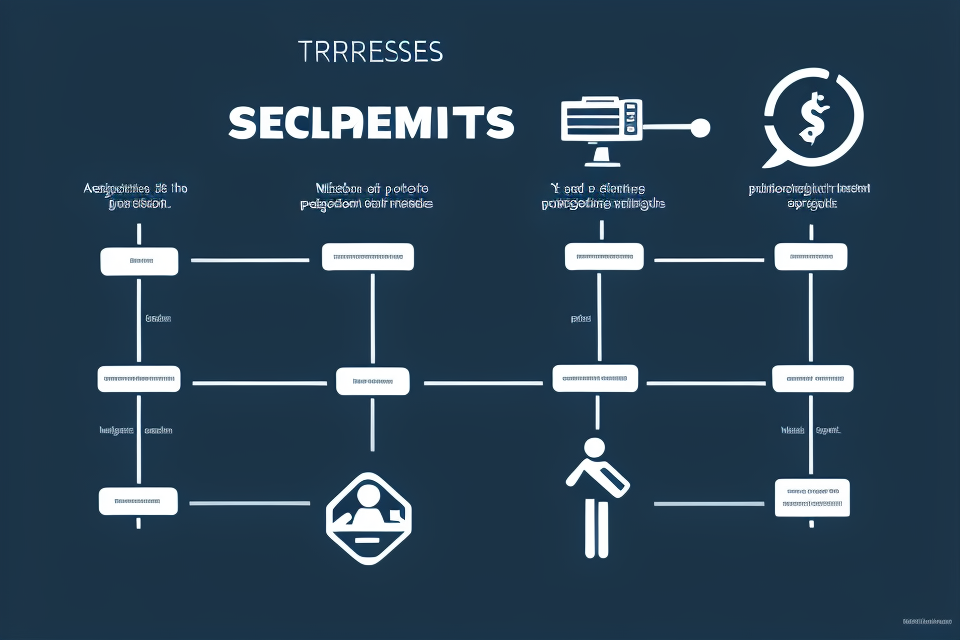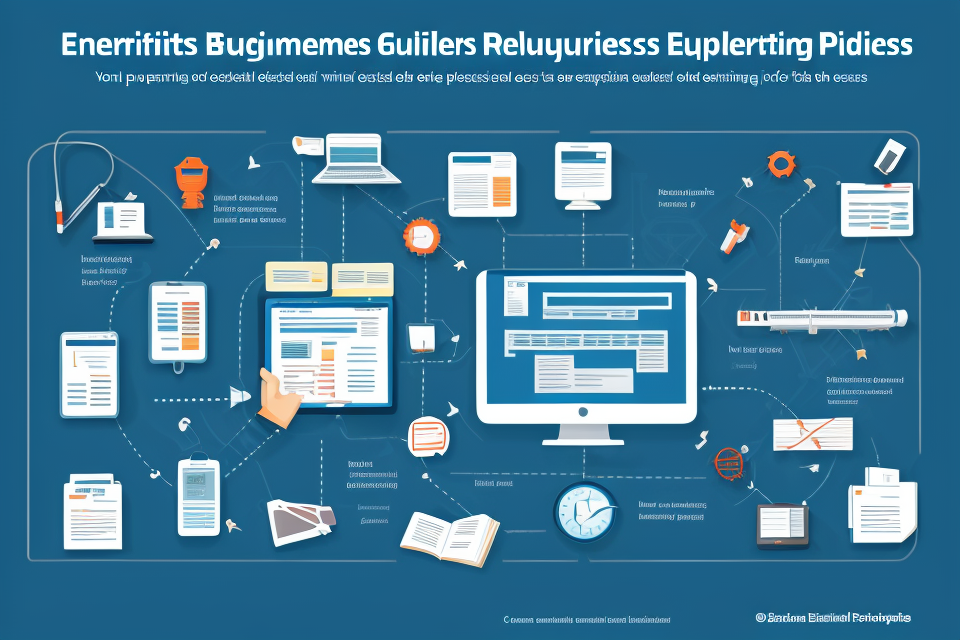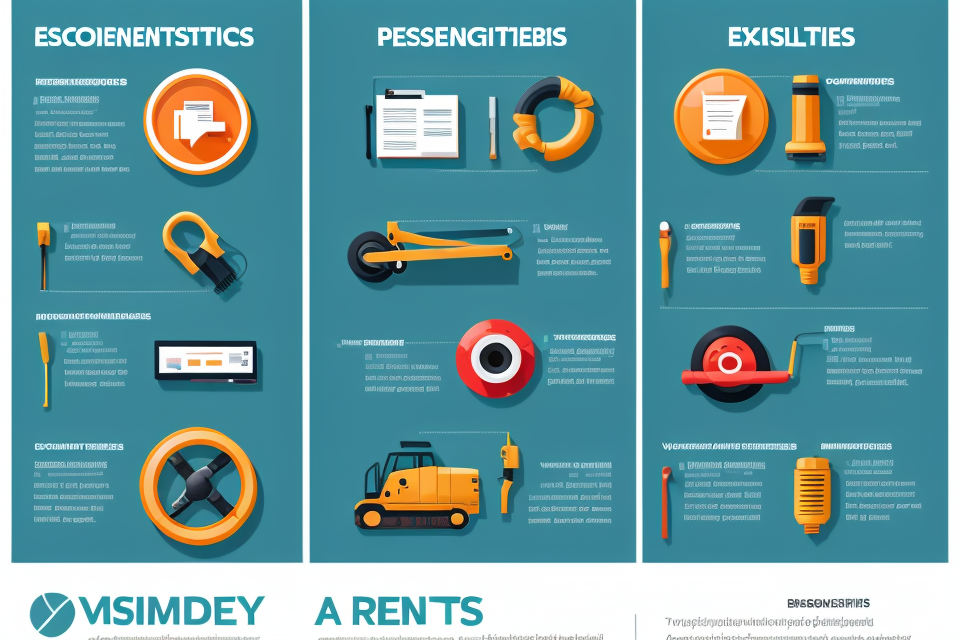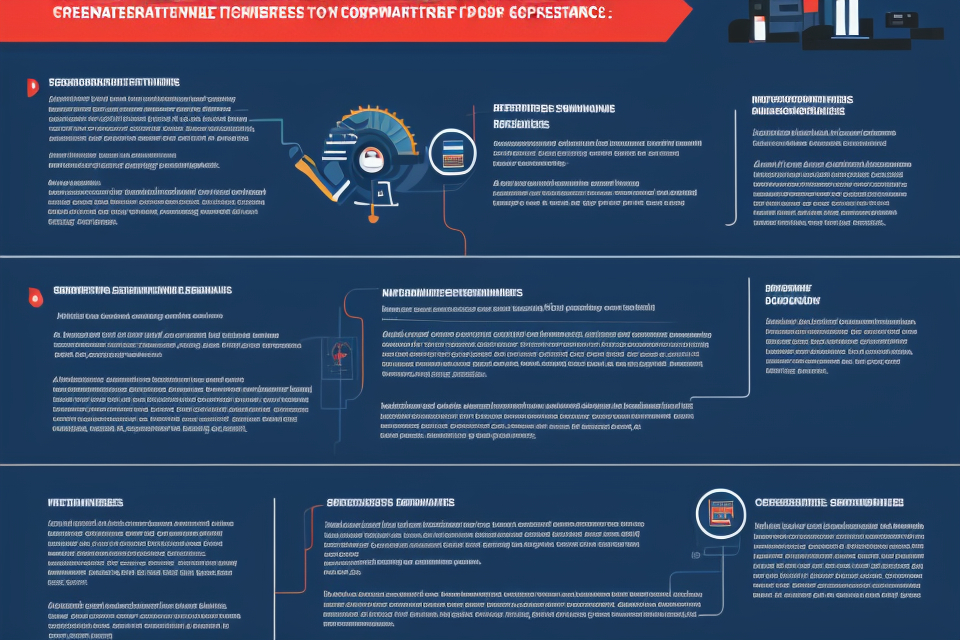Construction projects require a variety of equipment to complete tasks efficiently and effectively. Equipment selection is a critical process that requires careful consideration of various factors. This guide provides a comprehensive overview of the factors that should be considered when selecting equipment for construction projects. It covers topics such as the type of equipment needed, the budget, the site conditions, and the specific project requirements. Whether you’re a contractor, project manager, or homeowner, this guide will help you make informed decisions when it comes to selecting the right equipment for your construction project.
Factors to Consider When Selecting Construction Equipment
Budget
When selecting construction equipment, it is important to consider the budget. Financial constraints can limit the options available for equipment selection. Rental vs. purchase options should be evaluated based on the duration of the project and the long-term vs. short-term costs. It is important to carefully consider the cost of equipment ownership, including maintenance, repairs, and insurance. Additionally, the availability of funding and the financial stability of the construction company can also impact the budget for equipment selection. It is recommended to conduct a thorough cost-benefit analysis to ensure that the equipment selected is within the budget and provides the best value for the project.
Project Requirements
Site Conditions
- Topography: The type of terrain, including slope, elevation, and surface, will affect the selection of equipment. For example, a backhoe may be more suitable for flat land, while a track-type tractor may be better for steep slopes.
- Accessibility: The availability of space for equipment to maneuver and the proximity of the site to transportation routes will impact equipment selection. A crane may be necessary for high-rise construction, while a dump truck may be more appropriate for transporting materials to a remote site.
- Weather: Extreme weather conditions, such as heavy rain or snow, may require specialized equipment to ensure safety and efficiency. For example, a bulldozer may be more suitable for wet or muddy conditions, while a front-end loader may be better for snow removal.
Task Requirements
- Task-specific equipment: Certain tasks may require specific equipment, such as a concrete mixer for concrete work or a drill press for drilling. It is important to select equipment that is designed for the specific task at hand to ensure efficiency and safety.
- Production rate: The production rate of the equipment will impact the timeline of the project. For example, a wheeled loader may be more suitable for quick digging and loading, while a hydraulic excavator may be better for precise digging and grading.
- Versatility: The ability of the equipment to perform multiple tasks may be an important factor in equipment selection. For example, a backhoe can be used for digging trenches and foundations, while also being capable of some loading and material handling.
Safety Considerations
- Operator safety: Equipment selection should take into account the safety of the operator. For example, an enclosed cab may be necessary for equipment used in hazardous environments, such as a demolition site.
- Maintenance and repair: The availability of maintenance and repair services for the equipment should be considered to ensure the safety and reliability of the equipment. Regular maintenance and repair can reduce downtime and prevent accidents.
- Environmental impact: The environmental impact of the equipment should be considered, particularly in regards to noise and emissions. Equipment that is quieter and produces fewer emissions may be more suitable for urban construction sites or environments with strict noise and emissions regulations.
Operator Skills and Experience
When selecting construction equipment, it is important to consider the skills and experience of the operators who will be using the equipment. This is because the operator’s skills and experience can have a significant impact on the efficiency, safety, and overall success of the construction project. Here are some key factors to consider:
- Machine operation: The operator’s ability to safely and effectively operate the equipment is crucial. The operator should have a good understanding of the machine’s controls, capabilities, and limitations. They should also be able to use the equipment to complete tasks efficiently and accurately.
- Maintenance and repair: The operator should have a basic understanding of machine maintenance and repair procedures. This includes being able to perform routine maintenance tasks, such as oil changes and filter replacements, as well as identifying and addressing more serious issues.
- Safety protocols: The operator should be familiar with and follow all safety protocols and procedures related to the equipment. This includes wearing appropriate personal protective equipment (PPE), such as hard hats and safety glasses, as well as following proper lockout/tagout procedures to prevent accidental startup while performing maintenance or repair tasks.
In addition to these factors, it is also important to consider the operator’s experience with the specific type of equipment being used. For example, if a project requires the use of a crane, it is important to have operators who are experienced with crane operation and have a good understanding of the specific safety concerns and maintenance requirements associated with cranes.
Availability and Support
When selecting construction equipment, it is important to consider the availability and support provided by local suppliers and dealers. After-sales service and support, as well as replacement parts availability, are crucial factors to ensure the smooth operation of the equipment during the construction project.
Local Suppliers and Dealers
Local suppliers and dealers play a vital role in the equipment selection process. They can provide valuable information about the equipment, such as its features, specifications, and performance capabilities. In addition, they can offer guidance on the appropriate equipment for the specific project requirements and provide recommendations on the best equipment to meet the project goals.
After-Sales Service and Support
After-sales service and support are essential for the proper maintenance and repair of the equipment during the construction project. It is important to consider the availability of after-sales service and support, such as technical assistance, maintenance services, and repair services, to ensure that the equipment is well-maintained and operates efficiently throughout the project.
Replacement Parts Availability
Replacement parts availability is another important factor to consider when selecting construction equipment. Equipment downtime can have a significant impact on the project schedule and budget, so it is important to ensure that replacement parts are readily available in case of equipment failure or breakdown. Local suppliers and dealers can provide information on the availability of replacement parts for the equipment, as well as the lead time for delivery, to help minimize equipment downtime and ensure that the project stays on schedule.
Environmental Factors
When selecting construction equipment, it is important to consider environmental factors. These factors include emissions and noise regulations, environmental impact assessment, and sustainability goals.
- Emissions and noise regulations: Construction equipment can produce significant amounts of pollutants and noise, which can have a negative impact on the environment and surrounding communities. Therefore, it is important to consider emissions and noise regulations when selecting equipment. Some equipment may be more environmentally friendly than others, and it is important to choose equipment that meets regulations and minimizes environmental impact.
- Environmental impact assessment: An environmental impact assessment is a process that assesses the potential environmental impacts of a construction project. It considers factors such as soil erosion, water pollution, and habitat destruction. When selecting equipment, it is important to consider how the equipment will impact the environment and whether there are any measures that can be taken to minimize the impact.
- Sustainability goals: Construction companies may have sustainability goals that they aim to achieve. These goals may include reducing waste, minimizing energy consumption, and using environmentally friendly materials. When selecting equipment, it is important to consider how the equipment aligns with these sustainability goals and whether there are any measures that can be taken to achieve them.
In summary, when selecting construction equipment, it is important to consider environmental factors such as emissions and noise regulations, environmental impact assessment, and sustainability goals. By considering these factors, construction companies can minimize their environmental impact and work towards achieving their sustainability goals.
Equipment Features and Technologies
When selecting construction equipment, it is important to consider the features and technologies that are available. These features and technologies can have a significant impact on the performance, efficiency, and overall effectiveness of the equipment. Here are some key factors to consider:
- Machine Capabilities: The capabilities of the equipment should be carefully evaluated to ensure that they meet the specific needs of the project. This includes factors such as lifting capacity, digging depth, and trenching ability.
- Technological Advancements: Construction equipment is constantly evolving, and newer models may offer advanced features such as GPS guidance, automation, and remote control. These technologies can improve accuracy, efficiency, and safety on the job site.
- Energy Efficiency and Fuel Consumption: Equipment that is more energy efficient can help reduce operating costs and minimize environmental impact. It is important to consider the fuel consumption of the equipment, as well as any features that may improve energy efficiency, such as hybrid or electric power systems.
Overall, evaluating the features and technologies of construction equipment can help ensure that the right tools are selected for the job, maximizing efficiency, productivity, and safety on the job site.
Types of Construction Equipment
Earth Moving Equipment
Earth moving equipment refers to machines that are designed to move or redistribute soil, sand, and other earth materials. These machines are essential for various construction projects, including excavation, grading, and transportation of materials. There are several types of earth moving equipment, each with its unique features and purposes.
- Excavators: Excavators are large machines that are used to dig and move earth and other materials. They are typically used for digging foundations, trenches, and other excavations. Excavators have a long arm and a scoop or bucket that is used to scoop up and move earth. They also have a cab for the operator to control the machine.
- Backhoes: Backhoes are similar to excavators, but they are smaller and more compact. They are commonly used for smaller projects such as digging trenches and foundations. Backhoes have a backhoe attachment that is used to scoop up and move earth. They also have a front-mounted loader for moving materials.
- Loaders: Loaders are machines that are used to move and load materials onto trucks or other transportation vehicles. They are commonly used for loading and unloading materials such as dirt, sand, and gravel. Loaders have a large scoop or bucket that is used to scoop up and move materials.
- Dozers: Dozers are large machines that are used to push and move large amounts of earth and other materials. They are commonly used for grading and leveling land. Dozers have a large blade that is used to push and move materials.
- Graders: Graders are machines that are used to level and grade land. They are commonly used for road construction and land development. Graders have a large blade that is used to level and grade land. They also have a cab for the operator to control the machine.
When selecting earth moving equipment for a construction project, it is important to consider the specific needs of the project. Factors such as the size of the project, the type of materials being moved, and the terrain of the site should be taken into account when selecting the appropriate equipment.
Material Handling Equipment
Material handling equipment plays a crucial role in construction projects, as it facilitates the movement and storage of materials on and off construction sites. This equipment category includes a range of machines designed to handle, transport, and stack materials efficiently. In this section, we will explore the various types of material handling equipment commonly used in construction.
Cranes
Cranes are heavy-duty machines used to lift, move, and position materials and equipment. They are essential for construction projects that require the movement of large, heavy loads, such as building materials, machinery, and equipment. There are several types of cranes, including:
- Mobile cranes: These cranes can be moved from one site to another and are commonly used for a variety of lifting tasks.
- Tower cranes: These cranes are mounted on a concrete tower and are designed to lift heavy loads to great heights.
- Crawler cranes: These cranes are designed to move on tracks and are used for heavy-duty lifting tasks.
Forklifts
Forklifts are motorized vehicles used to lift, move, and stack materials. They are essential for moving heavy loads over short distances and are commonly used in warehouses, factories, and construction sites. There are several types of forklifts, including:
- Electric forklifts: These forklifts are powered by electricity and are suitable for indoor use.
- Gasoline forklifts: These forklifts are powered by gasoline and are suitable for outdoor use.
- Diesel forklifts: These forklifts are powered by diesel fuel and are suitable for heavy-duty use.
Conveyors
Conveyors are machines used to transport materials from one location to another. They are commonly used in construction projects to move materials over long distances, such as from a loading dock to a higher level of a building. There are several types of conveyors, including:
- Belt conveyors: These conveyors use a continuous belt to transport materials.
- Roller conveyors: These conveyors use a series of rollers to transport materials.
- Overhead conveyors: These conveyors are suspended from the ceiling and are used to transport materials over long distances.
Stackers and Reclaimers
Stackers and reclaimers are machines used to stack and retrieve materials, such as bricks, blocks, and other building materials. They are commonly used in construction projects to improve material handling efficiency and reduce labor costs. There are several types of stackers and reclaimers, including:
- Manual stackers and reclaimers: These machines are operated by hand and are suitable for small construction projects.
- Electric stackers and reclaimers: These machines are powered by electricity and are suitable for larger construction projects.
- Hydraulic stackers and reclaimers: These machines use hydraulic power to stack and retrieve materials and are suitable for heavy-duty use.
Telescopic Handlers
Telescopic handlers, also known as telehandlers, are machines used to lift and transport materials over short distances. They are commonly used in construction projects to move heavy loads, such as building materials, machinery, and equipment. There are several types of telescopic handlers, including:
- Diesel-powered telescopic handlers: These machines are powered by diesel fuel and are suitable for heavy-duty use.
- Electric-powered telescopic handlers: These machines are powered by electricity and are suitable for indoor use.
- Gasoline-powered telescopic handlers: These machines are powered by gasoline and are suitable for outdoor use.
Lifting Equipment
When it comes to construction projects, lifting equipment plays a crucial role in moving heavy materials and machinery to different levels and locations on the job site. Here are some of the most common types of lifting equipment used in construction:
Crawler Cranes
Crawler cranes are large, track-mounted cranes that are designed to move heavy loads over long distances. They are commonly used in large construction projects such as bridge building, shipyard construction, and large commercial developments. Crawler cranes have a long reach and can lift extremely heavy loads, making them ideal for heavy lifting tasks.
Tower Cranes
Tower cranes are tall, freestanding cranes that are used to lift heavy loads to high elevations. They are commonly used on high-rise construction projects and are capable of lifting loads weighing several tons. Tower cranes have a long arm that can be extended or retracted to lift loads to different levels.
Mobile Cranes
Mobile cranes are versatile cranes that can be moved from one location to another. They are commonly used in construction projects that require lifting heavy loads at multiple locations. Mobile cranes come in a variety of sizes and can be used for both short and long-term projects.
Rough-terrain Cranes
Rough-terrain cranes are designed to operate on rough or uneven surfaces. They are commonly used in construction projects that take place in remote locations or on sites with difficult terrain. Rough-terrain cranes have large, heavy-duty tires and are capable of lifting heavy loads in challenging conditions.
Crawler Dozers
Crawler dozers are large, track-mounted machines that are used for grading and moving earth. They are commonly used in large construction projects such as road construction, mining, and land development. Crawler dozers have a long, wide blade that is used to push and move large amounts of earth and debris.
Transportation Equipment
In the construction industry, transportation equipment plays a vital role in the efficient movement of materials, equipment, and personnel from one location to another. This section will provide an overview of the different types of transportation equipment commonly used in construction projects.
Trucks
Trucks are versatile vehicles that are commonly used in construction projects for transporting heavy loads such as building materials, tools, and equipment. They come in various sizes and configurations, including flatbed trucks, dump trucks, and cement mixers.
Haulers
Haulers are large trucks designed to transport heavy loads over long distances. They are commonly used in the construction industry to transport bulk materials such as sand, gravel, and aggregates from one location to another.
Tractors
Tractors are powerful machines used for pulling or pushing large loads, such as trailers or paving equipment. They are commonly used in construction projects to move heavy equipment and materials from one location to another.
Buses and Vans
Buses and vans are used for transporting personnel and equipment to and from construction sites. They come in various sizes and configurations, including single-deck and double-deck buses, mini-buses, and cargo vans.
Agricultural Equipment
Agricultural equipment, such as tractors and harvesters, may also be used in construction projects, particularly in large-scale land development projects. These machines are designed for heavy-duty work and can be used for tasks such as excavation, grading, and earth moving.
Support Equipment
- Generators: Generators are used to provide power to construction sites when there is no access to the main power grid. They are essential for running electrical tools and equipment, such as lighting, heating, and air conditioning. When selecting a generator, it is important to consider the power output, fuel type, and noise level.
- Light towers: Light towers are used to provide temporary lighting to construction sites during nighttime or in low-light conditions. They are essential for ensuring the safety of workers and for maintaining productivity during night shifts. When selecting a light tower, it is important to consider the height, lumens, and energy efficiency.
- Air compressors: Air compressors are used to provide compressed air for construction tools and equipment, such as nail guns, jackhammers, and sanders. They are essential for reducing the noise and vibration of power tools and for improving the efficiency of air-powered tools. When selecting an air compressor, it is important to consider the power output, pressure rating, and air flow rate.
- Pumps: Pumps are used to move fluids, such as water, concrete, and slurry, around construction sites. They are essential for maintaining proper drainage, for pumping concrete, and for removing debris from excavation sites. When selecting a pump, it is important to consider the capacity, pressure rating, and power output.
- Welding equipment: Welding equipment is used to join metal components together, such as structural steel, pipes, and rebar. They are essential for constructing building frames, for installing piping systems, and for reinforcing concrete structures. When selecting welding equipment, it is important to consider the welding process, power source, and voltage rating.
Tips for Selecting the Right Equipment
Define Your Needs
Equipment selection is a critical process in construction projects, as it can impact productivity, safety, and cost. Defining your needs is the first step in selecting the right equipment. Here are some key factors to consider:
- Clearly define project requirements: The first step in defining your needs is to clearly define the project requirements. This includes the scope of work, timeline, budget, and quality standards. You should also consider any special requirements, such as accessibility, environmental regulations, or safety standards.
- Assess operator skills and experience: It’s important to assess the skills and experience of the operators who will be using the equipment. This includes their training, certifications, and experience with similar equipment. You should also consider the size and physical abilities of the operators, as well as any language or cultural barriers.
- Determine the required capacity and power: The required capacity and power of the equipment will depend on the size and complexity of the project. You should consider the amount of material that needs to be moved, the size of the work area, and the type of terrain. You should also consider the power requirements of the equipment, such as electrical outlets or generators.
By defining your needs, you can narrow down your options and select the equipment that best meets your project requirements. In the next section, we will discuss how to evaluate equipment specifications and compare different options.
Research and Compare
Researching and comparing different brands and models of construction equipment is crucial in selecting the right equipment for a project. It allows for a better understanding of the features, specifications, and capabilities of the equipment, as well as their cost-effectiveness and return on investment (ROI). Here are some steps to follow when researching and comparing construction equipment:
- Identify the project requirements: Determine the specific needs of the project, such as the type of work to be done, the scale of the project, and any special requirements or regulations that need to be met.
- Create a list of potential equipment: Based on the project requirements, create a list of potential equipment that could be used for the project. This list should include different brands and models of equipment that meet the project requirements.
- Research the equipment: Once the list of potential equipment has been created, research each piece of equipment by reading reviews, industry reports, and product specifications. This research will help in evaluating the features, capabilities, and limitations of each piece of equipment.
- Compare the equipment: Compare the different pieces of equipment based on their specifications, features, and cost-effectiveness. Consider factors such as fuel efficiency, ease of operation, maintenance costs, and availability of replacement parts.
- Evaluate the ROI: Calculate the expected return on investment (ROI) of each piece of equipment. Consider factors such as the cost of the equipment, the cost of operation and maintenance, and the potential revenue generated by the equipment.
- Make a decision: Based on the research and comparison, make a decision on which piece of equipment is the best fit for the project. It is important to consider the project requirements, budget, and long-term goals when making this decision.
In conclusion, researching and comparing different brands and models of construction equipment is essential in selecting the right equipment for a project. It allows for a better understanding of the features, specifications, and capabilities of the equipment, as well as their cost-effectiveness and ROI. By following these steps, construction professionals can make informed decisions when selecting equipment for their projects.
Consult Experts
Seeking advice from industry professionals is an essential step in the equipment selection process. Here are some key reasons why consulting experts can be beneficial:
- Industry Knowledge: Industry professionals have extensive knowledge of the construction industry and the equipment that is commonly used. They can provide valuable insights into the latest trends, best practices, and the most suitable equipment for specific projects.
- Experience: Experienced professionals have a wealth of knowledge gained from working on various construction projects. They can offer practical advice based on their experiences, helping you avoid costly mistakes and ensuring that you select the right equipment for your project.
- Supplier Relationships: Equipment suppliers and dealers have relationships with a wide range of manufacturers and suppliers. They can provide unbiased recommendations based on your specific needs and requirements, helping you make an informed decision.
- Cost Savings: Experts can help you identify the most cost-effective equipment options, taking into account factors such as operating costs, maintenance requirements, and fuel efficiency. This can help you maximize your budget and reduce costs over the long term.
- Safety: Safety is a critical consideration in any construction project. Experts can advise on the safest equipment options, taking into account factors such as operator training requirements, safety features, and potential hazards.
In summary, consulting experts can provide valuable insights and advice when selecting construction equipment. By seeking advice from industry professionals, you can ensure that you make an informed decision that meets your specific needs and requirements.
Consider Maintenance and Support
Equipment selection for construction projects involves more than just choosing the right tools for the job. It is crucial to consider the maintenance and support requirements of the equipment to ensure that it is reliable and cost-effective in the long run. Here are some tips to help you assess maintenance requirements and costs, evaluate the availability of replacement parts, and consider ongoing support and service contracts.
Assess Maintenance Requirements and Costs
Before selecting construction equipment, it is important to assess the maintenance requirements and costs associated with each piece of equipment. Some equipment may require regular maintenance, such as oil changes and filter replacements, while others may have more complex maintenance needs, such as engine overhauls or transmission repairs. It is important to consider the frequency and cost of maintenance for each piece of equipment to ensure that it is within your budget and schedule.
Evaluate Availability of Replacement Parts
Another important factor to consider when selecting construction equipment is the availability of replacement parts. Equipment that uses specialized or hard-to-find parts may be more expensive to maintain over time, as you may need to purchase parts from a dealer or third-party supplier. It is important to evaluate the availability of replacement parts for each piece of equipment and consider the potential impact on maintenance costs and downtime.
Consider Ongoing Support and Service Contracts
Finally, it is important to consider ongoing support and service contracts when selecting construction equipment. Some equipment manufacturers offer service contracts that provide regular maintenance and repairs, as well as technical support and training. These contracts can help ensure that your equipment is always in good working order and can provide peace of mind when it comes to unexpected repairs or breakdowns. It is important to evaluate the cost and benefits of service contracts for each piece of equipment to determine whether they are worth the investment.
Plan for the Future
When selecting construction equipment, it’s important to consider not just the current project, but also future projects and growth. By planning for the future, you can ensure that the equipment you choose will meet your needs as your business expands and your project requirements change. Here are some key considerations for planning for the future when selecting construction equipment:
Consider future projects and growth
When selecting construction equipment, it’s important to consider the types of projects you’ll be working on in the future. If you anticipate that your business will grow and take on larger projects, it’s important to choose equipment that can handle increased demand. This may mean selecting equipment with higher capacity or more advanced features.
Plan for scalability and adaptability
Equipment that is scalable and adaptable can be a valuable investment for businesses that anticipate growth or changes in their project requirements. For example, equipment with interchangeable attachments or modular designs can be adapted to suit different project needs, while equipment with adjustable capacities can be used for a wider range of projects.
Choose equipment that can be easily upgraded or modified
Finally, it’s important to choose equipment that can be easily upgraded or modified as needed. This can help ensure that your equipment remains relevant and useful as your business grows and your project requirements change. Look for equipment with modular designs or components that can be easily swapped out or upgraded, and choose equipment from manufacturers that offer ongoing support and updates.
FAQs
1. What are the factors to consider when selecting construction equipment?
When selecting construction equipment, several factors need to be considered, including the size and type of the project, the specific requirements of the job, the budget, and the availability of the equipment. Other factors that may be considered include the operating costs, the reliability and durability of the equipment, and the level of maintenance required.
2. How do you determine the right equipment for a construction project?
To determine the right equipment for a construction project, it is important to consider the specific needs of the project. This may include factors such as the size and shape of the job site, the type of materials being used, and the accessibility of the site. Additionally, it is important to consider the expertise and experience of the crew that will be using the equipment, as well as any safety regulations that must be followed.
3. What types of construction equipment are available?
There are many different types of construction equipment available, including excavators, bulldozers, cranes, loaders, and graders. Each type of equipment has its own unique set of features and capabilities, and is designed to perform specific tasks on a construction site. It is important to select the right type of equipment for the specific needs of the project.
4. How do you ensure that the equipment is reliable and safe to use?
To ensure that the equipment is reliable and safe to use, it is important to perform regular maintenance and inspections. This may include checking the engine, hydraulic systems, and electrical components, as well as inspecting the brakes, tires, and other key components. Additionally, it is important to follow all safety guidelines and regulations when operating the equipment, and to provide proper training for the crew members who will be using the equipment.
5. How do you calculate the costs of using construction equipment?
To calculate the costs of using construction equipment, it is important to consider the purchase price of the equipment, as well as the ongoing operating costs. This may include the cost of fuel, maintenance, repairs, and replacement parts. Additionally, it may be necessary to factor in the cost of financing the equipment, as well as any taxes or fees associated with its use.





